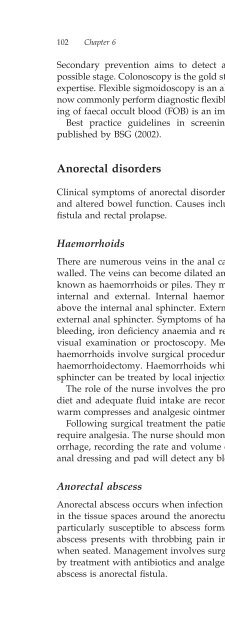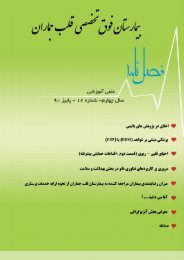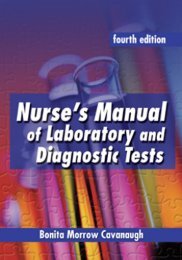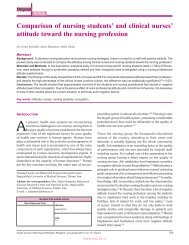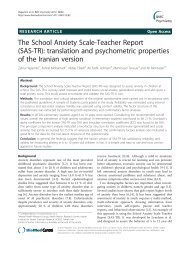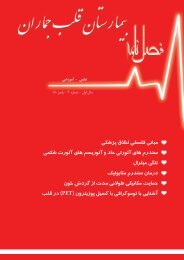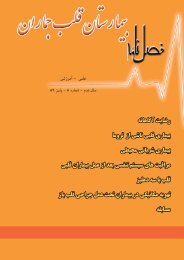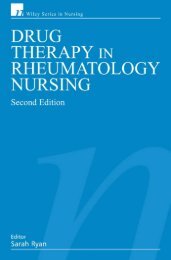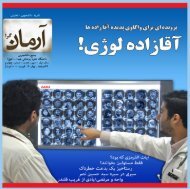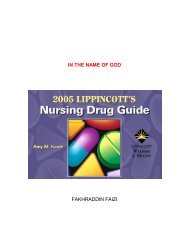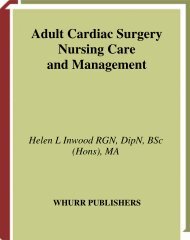Gastrointestinal Nursing.pdf
Gastrointestinal Nursing.pdf
Gastrointestinal Nursing.pdf
You also want an ePaper? Increase the reach of your titles
YUMPU automatically turns print PDFs into web optimized ePapers that Google loves.
102 Chapter 6Secondary prevention aims to detect and remove tumours at the earliestpossible stage. Colonoscopy is the gold standard but is expensive and requiresexpertise. Flexible sigmoidoscopy is an alternative option. Nurse endoscopistsnow commonly perform diagnostic flexible sigmoidoscopy. Widespread screeningof faecal occult blood (FOB) is an important screening tool.Best practice guidelines in screening for colorectal cancer have beenpublished by BSG (2002).Anorectal disordersClinical symptoms of anorectal disorders include rectal pain, rectal bleedingand altered bowel function. Causes include haemorrhoids, anorectal abscess,fistula and rectal prolapse.HaemorrhoidsThere are numerous veins in the anal canal; these are longitudinal and thinwalled.The veins can become dilated and convoluted to produce a conditionknown as haemorrhoids or piles. They may be divided into two main groups,internal and external. Internal haemorrhoids bulge into the rectal lumenabove the internal anal sphincter. External haemorrhoids protrude below theexternal anal sphincter. Symptoms of haemorrhoids include bright red rectalbleeding, iron deficiency anaemia and rectal pain. Diagnosis can be made byvisual examination or proctoscopy. Medical interventions for patients withhaemorrhoids involve surgical procedures, such as rubber band ligation andhaemorrhoidectomy. Haemorrhoids which do not prolapse through the analsphincter can be treated by local injection.The role of the nurse involves the provision of dietary advice; a high fibrediet and adequate fluid intake are recommended. Patients may benefit fromwarm compresses and analgesic ointments.Following surgical treatment the patient may complain of severe pain andrequire analgesia. The nurse should monitor the patient for reactionary haemorrhage,recording the rate and volume of the pulse. Frequent observation ofanal dressing and pad will detect any bleeding.Anorectal abscessAnorectal abscess occurs when infection causes localised accumulation of pusin the tissue spaces around the anorectum. Patients with Crohn’s disease areparticularly susceptible to abscess formation. The patient with an anorectalabscess presents with throbbing pain in the anorectum, which can increasewhen seated. Management involves surgical drainage of the abscess followedby treatment with antibiotics and analgesia. One complication of an anorectalabscess is anorectal fistula.


